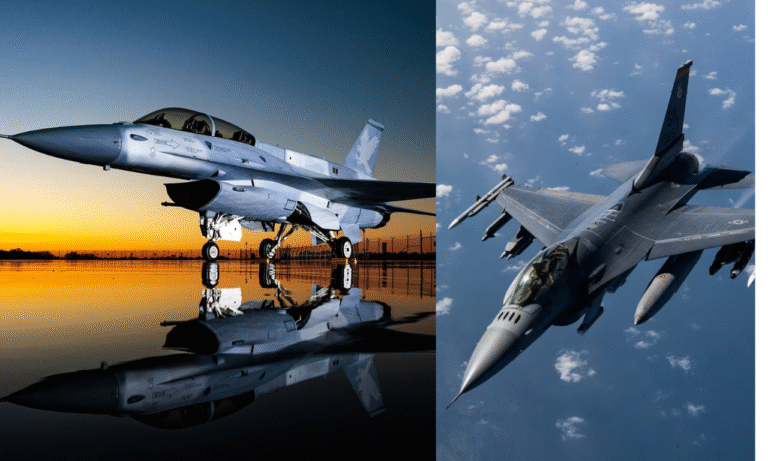I still remember the first time I saw an F-16 Fighting Falcon up close. It was at an airshow years ago, and honestly, I wasn’t expecting to be blown away. But as soon as that jet screamed across the sky, pulling off maneuvers I didn’t think were even possible for a machine, I felt goosebumps all over. The roar of the engine, the sharp turns, and the sheer speed—it wasn’t just a performance, it was a statement.
That day sparked my fascination with the F-16. Over time, I’ve read about its history, talked with a few aviation enthusiasts, and even met a retired pilot who had flown one. And let me tell you, the F-16 isn’t just another fighter jet—it’s a legend that continues to matter even today.
In this post, I want to share what makes the F-16 so iconic, mix in a bit of my personal perspective, and explain why it still captures imaginations worldwide.
A Quick Background: The F-16’s Story
The General Dynamics F-16 Fighting Falcon, often just called the “F-16,” was first introduced in the 1970s. Back then, the U.S. Air Force needed a lightweight, versatile fighter that could dominate the skies without breaking the budget.
The result? A jet that’s fast, agile, and reliable. It quickly became a backbone for not just the U.S. military but also allied forces around the world. To this day, more than 25 countries operate the F-16, which says a lot about its staying power.
What’s even cooler is how adaptable it is. Over the years, the F-16 has been upgraded with new technology, weapons systems, and avionics. This constant evolution means it hasn’t just survived—it has thrived.
Why the F-16 Stands Out
There are plenty of fighter jets out there, but the F-16 carved a special place in aviation history. Here’s why:
1. Agility and Maneuverability
One of the F-16’s biggest strengths is its design. With its frameless bubble canopy for better visibility, side-mounted control stick for easier handling, and fly-by-wire system, it gives pilots unmatched control.
I once asked that retired pilot I mentioned earlier what it felt like to fly one. His answer stuck with me: “It feels like the plane is reading your mind.” That’s how intuitive the controls are.
2. Multirole Capabilities
Unlike some jets that are specialized for one role, the F-16 is a true multirole aircraft. It can handle air-to-air combat, ground attack missions, and even reconnaissance. That flexibility is part of why so many countries adopted it.
3. Speed and Power
The jet can hit speeds of over Mach 2 (twice the speed of sound). Imagine going from one end of a country to another in minutes. Combine that with its ability to carry a wide variety of weapons, and you get a jet that’s both fast and fierce.
My Personal Tips for Appreciating the F-16
Now, you might not be hopping into the cockpit anytime soon (I know I won’t), but there are still ways to truly appreciate the F-16:
-
Go to an Airshow
Watching an F-16 fly live is nothing like seeing videos online. The sound, the speed, the sheer thrill—it’s unforgettable. If you ever get the chance, grab it. Trust me, you’ll walk away with a whole new level of respect. -
Learn Its History Through Stories
I’ve found that reading personal accounts from pilots gives you a deeper connection to the aircraft. Technical specs are interesting, but hearing someone describe dodging enemy fire or pulling high-G maneuvers in an F-16 brings it all to life.
The F-16 in Action Around the World
Another thing I love about the F-16 is how it’s not just an American jet—it’s a global one. From Europe to Asia to the Middle East, the Fighting Falcon has been part of countless operations.
Countries like Israel, Turkey, Pakistan, and Norway all operate F-16s. Each one has adapted the jet to suit their needs, proving just how versatile it is.
Modern Upgrades: Keeping the F-16 Relevant
Even though newer jets like the F-35 often grab the spotlight, the F-16 isn’t going anywhere anytime soon.
Recent upgrades include:
-
Advanced radar systems for better targeting.
-
Improved cockpit displays that make things easier for pilots.
-
Extended lifespan programs to keep older airframes flying safely.
It’s like giving a classic car a brand-new engine and modern tech—keeping the spirit alive while enhancing performance.
Fun Facts About the F-16
Here are a few tidbits that always make me smile when I share them:
-
The F-16 was the first jet to use a fly-by-wire system, meaning electronic signals control the plane instead of direct mechanical linkages.
-
Its nickname, “Viper,” actually came from the pilots, who thought it looked like a snake ready to strike.
-
Over 4,600 F-16s have been built, making it one of the most widely produced fighter jets in history.
Why the F-16 Still Captures Hearts
I think part of the F-16’s charm is that it’s both a symbol of power and a reminder of innovation. It wasn’t built to be flashy—it was built to work, to adapt, and to last. And it has done all three remarkably well.
For me personally, the F-16 represents a balance between human skill and machine capability. It shows what’s possible when engineering and courage come together in one powerful package.
Wrapping It Up: The F-16’s Lasting Legacy
So, what’s the takeaway? The F-16 isn’t just an aircraft—it’s a story. A story of innovation, adaptability, and human ingenuity. From airshows that inspire kids like me to global missions that shape history, the F-16 continues to prove its worth.
If you’ve never seen one in action, I highly recommend adding that to your bucket list. Whether you’re an aviation geek or just curious, the experience will stick with you.

